Ecologists fight to save Melbourne’s wildlife at risk of extinction
A STARTLING number of animals that once thrived in forests, rivers and creeks on Melbourne’s fringe are on the brink of extinction.

North West
Don't miss out on the headlines from North West. Followed categories will be added to My News.
A STARTLING number of animals that once thrived in forests, rivers and creeks on Melbourne’s fringe are on the brink of extinction.
Development and catastrophic natural events such as bushfires and drought have rapidly destroyed habitat, food resources and breeding grounds and, along with other factors, spelled disaster for many species around Melbourne.
Despite long-term conservation and revegetation efforts Zoos Victoria says the helmeted honeyeater and leadbeater’s possum — both state emblems — are both critically endangered.
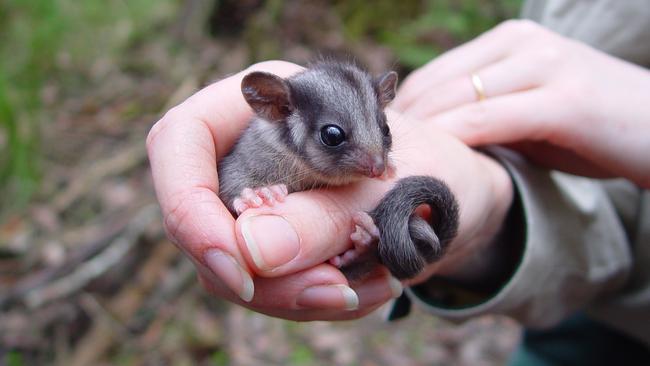
Zoos Victoria life sciences manager at Healesville Sanctuary Dr Rupert Baker said the 2009 Black Saturday bushfires in Marysville and Kinglake almost wiped out the leadbeater’s possum, destroying more than 40 per cent of its population and decimating its habitat.
According to Zoos data there are about 40 of the tiny possums left in the wild.
Efforts to save the orange-bellied parrot, one of only three migratory parrots in the world, began in the 1980s but according to Zoos, fewer than 50 parrots remain in the wild.
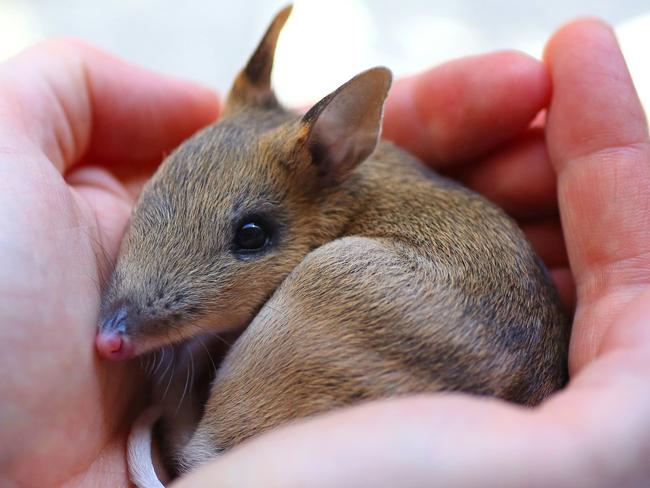
Dr Baker said the eastern barred bandicoot became extinct on Australia’s mainland, mainly due to foxes.
But Zoos staff launched a trial project, harnessing the famous guardian instincts of Maremma sheepdogs to protect a precious new colony of bandicoots on Churchill Island (Phillip Island Nature Park).
RELATED: Working dog Albus, the bandicoot bodyguard
Zoos Victoria experts have identified 20 of the most critically-endangered animals, including three non-Victorian species, and taken direct action to prevent their extinction through its captive breeding program.
Dr Baker said the priority list was based on a more concerning list of threatened species by the Department of Environment, Land, Water and Planning.
The Department’s list includes 293 Victorian vertebrates and 178 invertebrates.
Dr Baker said some endangered wild populations were in such dire straits that “insurance populations” have been established in captivity.
Some animals bred in captivity are released to help boost wild populations.
According to Dr Baker, the captive population of some species outnumbers those in the wild.
“Captive breeding is vital to ensure genetic diversity,” Dr Baker said.
“These (wild) populations get so small there’s no one left to breed with.”
“Without the actions of people, these populations would have declined.”
Dr Baker is hopeful that in 50 years, there will be more animals in the wild than there are today.
Zoos Victoria has allocated $5.6 million to various threatened species projects this year.
Senior wildlife ecologist at the Centre for Environmental Stress and Adaptation Research (Cesar) Josh Griffiths said public action was integral to fighting extinction.
Community efforts to revegetate creeks and river beds have helped boost platypus numbers, particularly in Sunbury’s Jackson’s Creek, after a rapid drought-related population decline over 15 years, he said.
Mr Griffiths said the official platypus population was unknown because they are difficult creatures to monitor, but it appeared numbers had bounced back over the past five years.
The platypus has “the cute factor” on its side, but many other animals and insects don’t have such a high public profile, he said.
Some species with more general habitat and food needs, such as rainbow lorikeets, cockatoos and brushtail possums, have been able to adapt to the urban sprawl to the point where some people consider them pests, he said.
“Melbourne has some great bird and animal life but we take if for granted and we don’t recognise it,” Mr Griffiths said
“People protect what they love. We need to make people love their environment.”
“Melbourne has some great bird and animal life but we take if for grantedand we don’t recognise it.” — Josh Griffiths
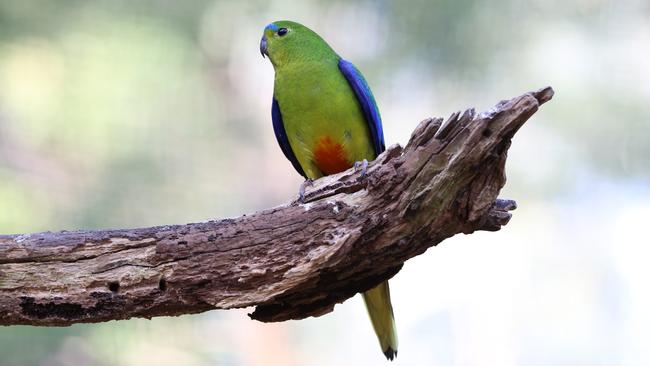
Plight of the helmeted honeyeater
VICTORIA’s only endemic bird species is in critical danger with fewer than 200 left in the wild.
The striking yellow and black helmeted honeyeater, also the state’s avian emblem, once thrived in swampy forests from Healesville to South Gippsland but today the bird can only be found inside a 10km sq area at Yellingbo Nature Reserve in Melbourne’s east.
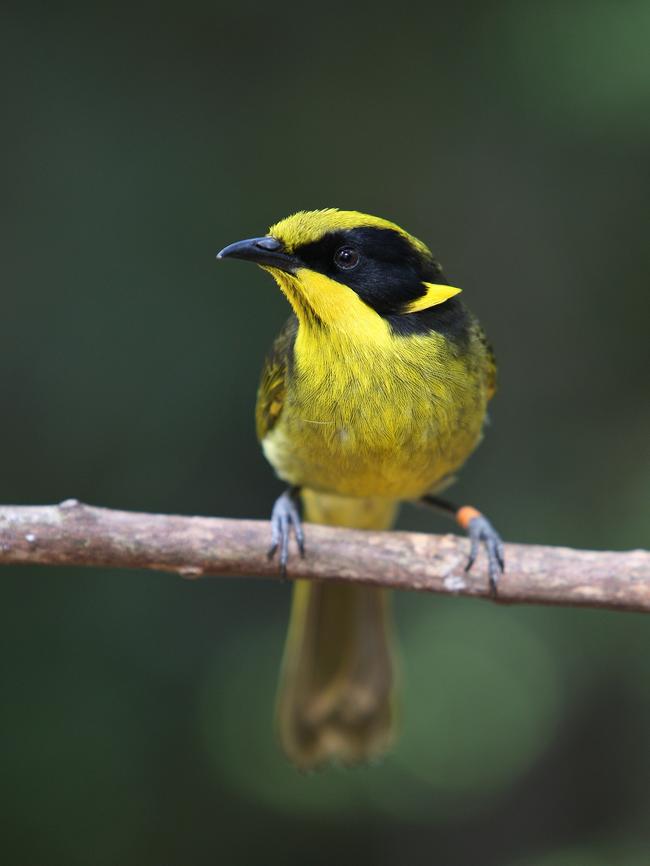
According to Zoos Victoria, habitat destruction is the main cause of its demise, and with such low numbers the species is extremely vulnerable during events such as bushfires.
An enormous effort by volunteers to revegetate the bird’s natural habitat has led to a record 64 fledglings this season.
Friends of the Helmeted Honeyeater environment co-ordinator James Frazer reported the Yellingbo colony had grown from just 60 birds in 2011 to 194 at last count in December.
“I’m completely stoked about this. It’s the best breeding season since the beginning of the program 26 years ago,” Mr Frazer said.
“And they’re still nesting despite the hot, dry conditions so that number could change.”
Last year the group planted about 35,000 native seedlings in the reserve, in a bid to expand the bird’s breeding ground and food resources.
“We want to do everything we can to reverse the plight of the helmeted honeyeater and take direct action to re-establish their habitat so they have room to breed.”
Zoos Victoria’s captive breeding program is also boosting the population.
Healesville Sanctuary veterinarian Dr Rupert Baker said 18 helmeted honeyeaters, bred in captivity, were released into the wild last year.
The program also includes a surrogate parent plan, where captive chicks are placed in nests in the wild.
“We want to do everything we can to reverse the plight of the helmeted honeyeater and take direct action to re-establish their habitat so they have room to breed.” — James Frazer, Friends of the Helmeted Honeyeater
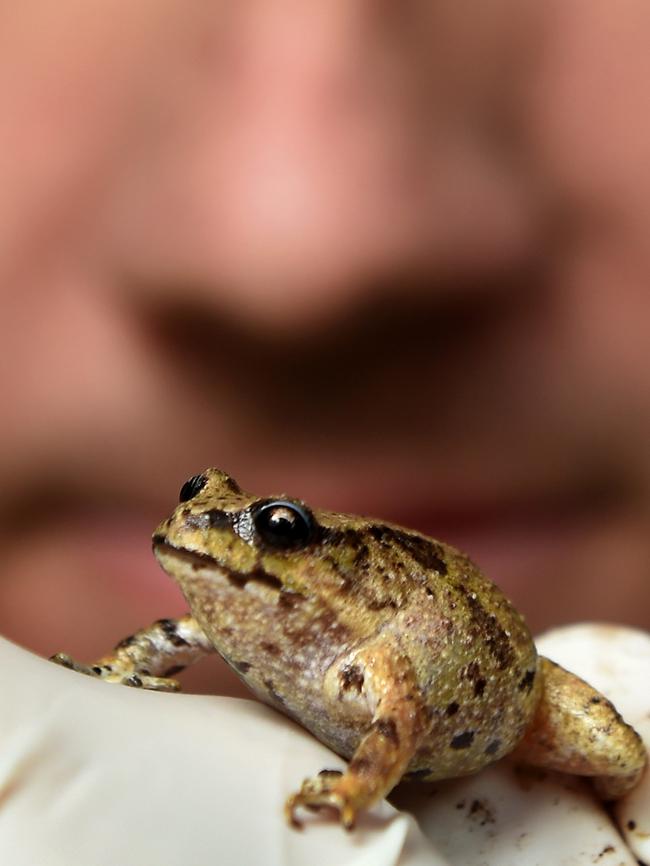
● Helmeted honeyeater
About 200 in the wild — 37 in captivity
●Baw Baw frog
Wild population unknown — 11 male adults in captivity
●Leadbeater’s possum
About 40 in the wild — 16 in captivity
●Orange-bellied parrot
Less than 50 in the wild — 48 in captivity
●Regent honeyeater
Fewer than 500 in the wild. No captive breeding program
Source: Zoos Victoria, Friends of the Helmeted Honeyeater, Regent Honeyeater Project


